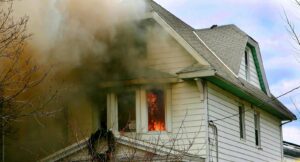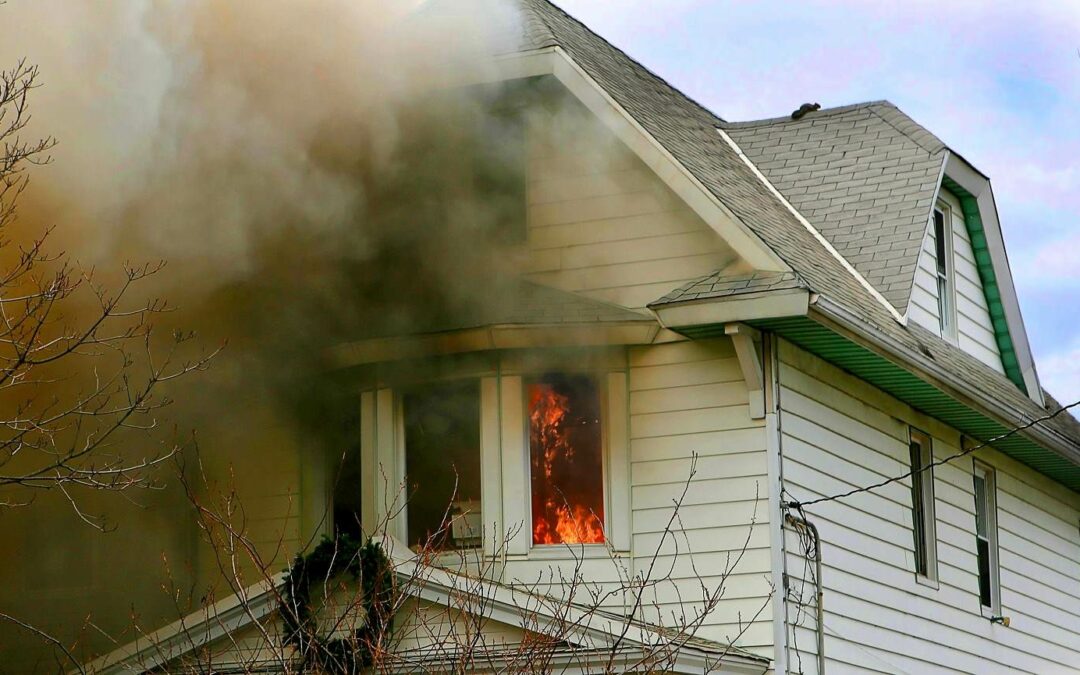Have any Idea What Is The Fire Damage Restoration Process? Fires can cause devastating losses, both emotionally and materially. In 2020, fires in the United States resulted in an astounding $21.8 billion in damages, highlighting the critical nature of effective fire damage restoration. This process is essential for helping individuals and communities recover and rebuild. This article delves into what fire damage restoration entails, underlining its importance in returning properties to their original, pre-loss condition.
Fire damage restoration is a comprehensive process involving assessing, securing, and repairing properties damaged by fire and smoke, aiming to restore them to their state before the incident.

The Scope of Fire Damage Restoration
Fire damage restoration goes beyond mere repairs. It’s a part of a larger disaster recovery effort, including water and weather damage restoration. According to the 2020 National Fire Protection Association (NFPA) report, the extent of fire damages in the U.S. alone underscores the urgency and importance of this process. It involves not just repairing structural damage but also addressing smoke damage and potential water damage used in extinguishing the fire.
The Fire Restoration Process
The process is meticulous and varies in duration, often taking weeks to months. Key steps include:
Assessment of Damage: Professionals conduct a thorough evaluation to understand the extent of fire and smoke damage.
Securing the Property: This includes boarding up and using tarps to protect the property from further damage.
Water Removal and Drying: Essential if water was used in extinguishing the fire, to prevent subsequent mold and corrosion.
Cleanup and Smoke Removal: Involves extensive cleaning to remove soot, smoke, and debris, followed by deodorization.
Construction and Restoration: Rebuilding and repairing damaged structures to restore the property to its pre-fire state.
Professional Roles in Fire Restoration
Fire Damage Assessment Experts: Assess the extent of fire damage.
Restoration Technicians: Skilled in cleaning, deodorization, repairing fire-damaged structures.
Health and Safety Technicians: Monitor health hazards like asbestos and lead.
Project Managers: Oversee the restoration project, ensuring quality and efficiency.
Water Damage Specialists: Address water damage resulting from firefighting efforts.
Customer Support and Insurance Liaison: Assist property owners with insurance claims and support.
Challenges in Fire Damage Restoration
Concurrent Water Damage: Addressing water damage alongside fire restoration.
Structural Integrity Concerns: Assessing and repairing structural safety.
Health Hazards: Managing risks related to disturbed asbestos and lead.
Smoke and Soot Contamination: Specialized cleaning for removal and deodorization.
Emotional and Psychological Impact: Providing empathetic support to affected individuals.
Coordination with Insurance Companies: Navigating insurance claims and documentation.
Restoration vs. Replacement: Deciding between salvaging or replacing damaged items.
Psychological Impact and Recovery
A critical yet often overlooked aspect of fire damage restoration is addressing the psychological trauma faced by the occupants. The devastation wrought by fire extends beyond the physical damage to properties, deeply affecting the emotional well-being of those involved. Restoration professionals increasingly recognize the importance of integrating emotional support and counseling services into their offerings, providing a holistic recovery path that fosters both mental and physical healing.
The Critical Nature of Immediate Response
The efficacy of fire damage restoration is significantly enhanced by an immediate response. Quick action is paramount in mitigating secondary damage, such as the complications arising from water used in extinguishing the fire leading to mold, or soot and smoke embedding into surfaces. Emergency board-up services play a pivotal role in this phase, securing the property from further damage due to weather, animals, or unauthorized access, thereby preserving the integrity of the restoration efforts and facilitating insurance assessments.
Technological Advances in Restoration Practices
The field of fire damage restoration has seen remarkable advancements in technology, with the introduction of tools like thermal foggers for odor removal, ozone generators for air purification, and infrared cameras to uncover hidden water damage. Moreover, the use of sophisticated project management software streamlines the restoration process, enhancing communication and coordination among all stakeholders, ensuring a more efficient and effective recovery.
Handling Hazardous Materials
Fires in older structures can unearth hazardous materials such as asbestos and lead, necessitating specialized removal techniques to safeguard health. Additionally, the combustion of synthetic materials can release harmful chemicals, requiring expert handling to detoxify the environment. Restoration professionals are equipped with the necessary knowledge and tools to manage these risks, ensuring a safe environment post-restoration.
Navigating Insurance Claims and Documentation
A daunting aspect of fire recovery is navigating the insurance claims process. Restoration companies often extend their services to assist property owners in documenting damages, submitting claims, and negotiating settlements. The option of direct billing to insurance companies further alleviates the financial stress on property owners, streamlining the path to restoration.
Embracing Sustainability and Energy Efficiency
In the wake of a fire, there lies an opportunity to rebuild in a more sustainable and energy-efficient manner. Restoration processes are increasingly incorporating eco-friendly practices, from utilizing green cleaning agents to recycling salvageable materials. Upgrades to insulation, windows, and heating systems not only contribute to a more sustainable home but also offer long-term savings and environmental benefits.
Long-term Fire Prevention Strategies
The conclusion of the restoration process offers a critical moment to educate property owners on fire safety and prevention. By imparting knowledge on the common causes of fires and strategies to mitigate risks, restoration professionals empower homeowners and business owners to safeguard against future incidents, rounding out the comprehensive approach to fire damage restoration.
Conclusion
The fire damage restoration process is a crucial step towards recovery after a fire incident. It ensures that damaged properties are safely and effectively restored to their original condition, providing peace of mind and a path forward for affected individuals and communities.
FAQ Section About What Is The Fire Damage Restoration Process
What is Fire Damage Restoration?
Fire damage restoration involves a series of steps to repair and restore properties affected by fire and smoke, ensuring they are safe and habitable again.
How Does Fire Restoration Differ from Other Disaster Restorations?
Unlike water or weather damage restoration, fire restoration is often more complex due to the combination of fire, smoke, and often water damage, requiring a multi-faceted approach.
What Steps are Involved in the Fire Restoration Process?
The process includes damage assessment, property securing, water removal, cleanup of smoke and soot, and finally, reconstruction and restoration of the damaged areas.
How Long Does the Fire Restoration Process Typically Take?
The duration varies based on the extent of the damage, property size, and specific restoration needs, ranging from several weeks to months.
Can Fire-Damaged Properties Always be Restored to Their Original State?
While many properties can be restored to their pre-fire condition, the feasibility depends on the extent of the damage and the structure’s condition post-fire.

